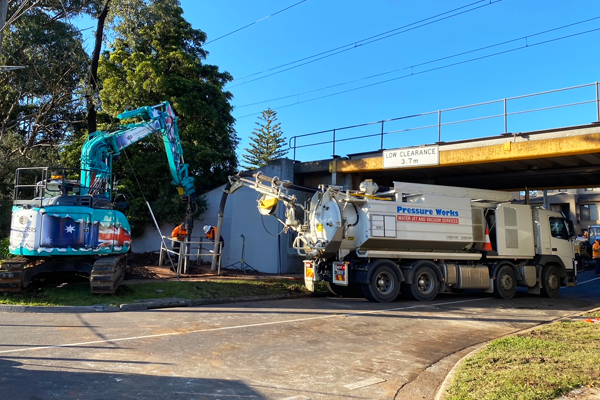Suction trucks come with a tank and a pump that suck sludge, slurry, liquid, debris, and other waste materials from the drains.
However, this isn’t only for use with drains as waste materials can accumulate just about anywhere.
Whatever it happens to be, if it becomes tough to clean, suction trucks can get rid of liquid waste quickly.
How suction trucks are used
Suction trucks are also known as vacuum tankers. They are often used to collect waste material from construction and disposal sites such as sewage treatment plants.
Unlike high-pressure water jetting that unclogs drains using high water force, this method involves high force air that pulls the waste from the ground and disposes of it in the tank of the truck.
These trucks not only collect the rubbish from the site but also transport it to a location in which it can be disposed of correctly.
Many people don’t know how suction trucks work and are curious about how these tankers actually function. So following is a brief explanation.
How do suctions trucks work?
These trucks come with a highly powerful pump that pulls air out of the tank.
As soon as the air is removed from the tank, it creates a vacuum force. This force is too high for the waste materials to resist.
There are two shutoff valves inside: the primary and secondary valves. The operator opens both these valves together.
Once this happens, the vacuum force from the tank tries to equalise with the exterior atmosphere.
This helps to suck any fluids and debris that are near the suction pipe.
Essential parts of the suction truck
The tank is one of the more crucial parts of the suction truck. It not only provides the vacuum force but also stores the waste materials collected from the site.
These trucks also have a lance and a hose that you need to hold up in the air away from liquids. This allows the pressure in the tank to equalise quickly.
It is important to make sure the lance stays away from any liquid because it will then pull the liquid in the tank instead of the air.
A pump is attached just inside the tanker that creates the vacuum pressure. The stronger the pressure, the quicker the pipe will suck the waste.
Emptying the tanker
Suction trucks have evolved over the years, and they now have more powerful pumps and bigger tanks than before.
However, the performance of the vacuum depends on several factors such as:
- Quality of the air seals and the tank.
- Leak-free quality of the valves.
- Power of the suction pump.
- Resistance power of the pump, hoses, and tanks against deterioration and corrosion.
Once the debris and liquid waste collected, they need to be disposed of correctly at a designated site without affecting the environment.
Like the vacuum tank sucks in the waste materials, it can also eject them out at the desired location.
Many suction trucks come with a “pressure out” button that ejects the accumulated debris quickly.
However, many trucks don’t have this option, and the tankers are emptied by gravity. The tanker is angled at an acute position to offload the waste inside.
The discharge time of the waste depends on the thickness of the slurries and liquids that you collect.
The size of the tank is another factor that decides the discharge time. An 8-9 cubic meter tanker offloads in about 15 minutes.
It can take less time if the diameter of the hosepipe is bigger and the sludge isn’t too thick.
Suction trucks are often used to dispose of industrial liquids, human excreta, and various other liquids that are tough to clean.
This is one of the most cost-effective techniques to get rid of these items that can otherwise create a serious mess and pose health and environmental issues.
Pressure Works has a fleet of suction trucks in Melbourne and are specialists when it comes to the removal of liquid waste and other unwanted debris.
We employ highly trained technicians and the latest technology to help remove most types of liquid waste and debris that require correct disposal.
If you have a project that requires a vacuum tanker, please call us today on 0419 577 441 or contact us through our website https://www.pressureworks.com.au/contact/.

